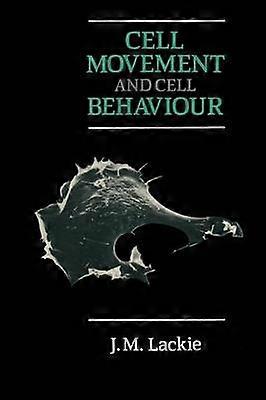Description
1 Introduction. - 1. 1 Why is movement interesting?. - 1. 2 What do we mean by movement'?. - 1. 3 What causes movement?. - 1. 4 An analogy. - 1. 5 Motor design an abstract exercise. - 1. 6 How are movements controlled?. - 1. 7 Which motor for the task?. - References. - 2 Motors Based on Actomyosin. - 2. 1 Introduction. - 2. 2 Components of the motor. - 2. 3 The basic motor. - 2. 4 Linear contractile systems. - 2. 5 Non-linear: planar systems. - 2. 6 Non-linear: solid systems. - 2. 7 Control of the motor. - 2. 8 Summary. - References. - 3 Motors Based on Microtubules. - 3. 1 Introduction. - 3. 2 Structure of microtubules. - 3. 3 Dynein. - 3. 4 The basic motor. - 3. 5 Cilia and flagella. - 3. 6 Movement in the mitotic spindle. - 3. 7 Movement associated with cytoplasmic microtubules. - 3. 8 Summary. - References. - 4 Motors of Other Sorts. - 4. 1 Introduction. - 4. 2 Bacterial flagella. - 4. 3 Other bacterial motors. - 4. 4 The spasmoneme of vorticellids. - 4. 5 Assembly-disassembly motors. - 4. 6 Hydraulic systems. - 4. 7 Miscellaneous motor systems. - 4. 8 Summary. - References. - 5 Swimming. - 5. 1 General. - 5. 2 Swimming. - 5. 3 Methods of obtaining forward thrust. - 5. 4 Control of the direction of ciliary beat. - 5. 5 Summary. - References. - 6 Crawling Movement. - 6. 1 Introduction. - 6. 2 A simplistic analysis of the problem. - 6. 3 Amoeba. - 6. 4 Fibroblast locomotion. - 6. 5 Fibroblast spreading. - 6. 6 Movement of other cell types. - 6. 7 Summary. - References. - 7 Moving in a Uniform Environment. - 7. 1 Introduction. - 7. 2 Random walks and internal bias. - 7. 3 Effects of changes in environmental properties. - 7. 4 Roughness. - 7. 5 Rigidity and deformability. - 7. 6 Summary. - References. - 8 Anisotropic Environments. - 8. 1 General. - 8. 2 Trapping and avoidance. - 8. 3 Gradients. - 8. 4 Flow. - 8. 5 Magnetic and electric fields. - 8. 6 Gravity. - 8. 7 Shape. - 8. 8Rigidity. - 8. 9 Summary. - References. - 9 Chemotaxis. - 9. 1 General. - 9. 2 The problem - a theoretical analysis. - 9. 3 Bacterial Chemotaxis. - 9. 4 Chemotaxis in Paramoecium. - 9. 5 Chemotaxis in the cellular slime-moulds. - 9. 6 Chemotaxis in Myxobacteria. - 9. 7 Chemotaxis of leucocytes. - 9. 8 Summary. - References. - 10 Cell-Cell Interactions. - 10. 1 Introduction. - 10. 2 Contact inhibition of locomotion. - 10. 3 Consequences of contact inhibition. - 10. 4 Escape from normal contact inhibition. - 10. 5 Invasiveness as a general phenomenon. - 10. 6 Summary. - References. Language: English
-
Fruugo ID:
337307244-740933678
-
ISBN:
9780045740352
Delivery & Returns
Dispatched within 4 days
Shipping from United Kingdom.
We do our best to ensure that the products that you order are delivered to you in full and according to your specifications. However, should you receive an incomplete order, or items different from the ones you ordered, or there is some other reason why you are not satisfied with the order, you may return the order, or any products included in the order, and receive a full refund for the items. View full return policy

